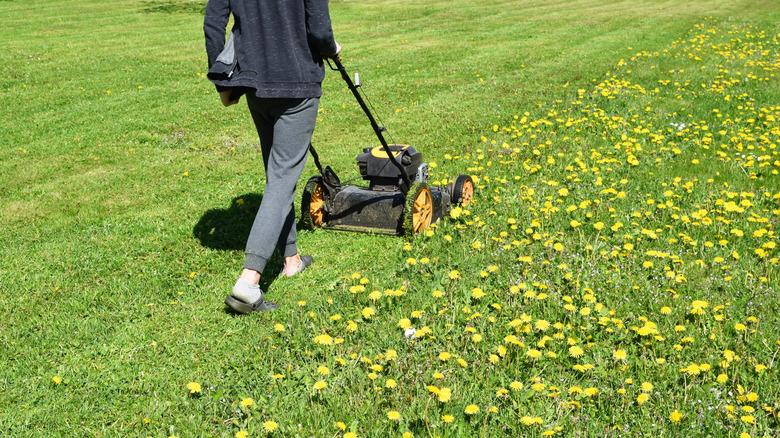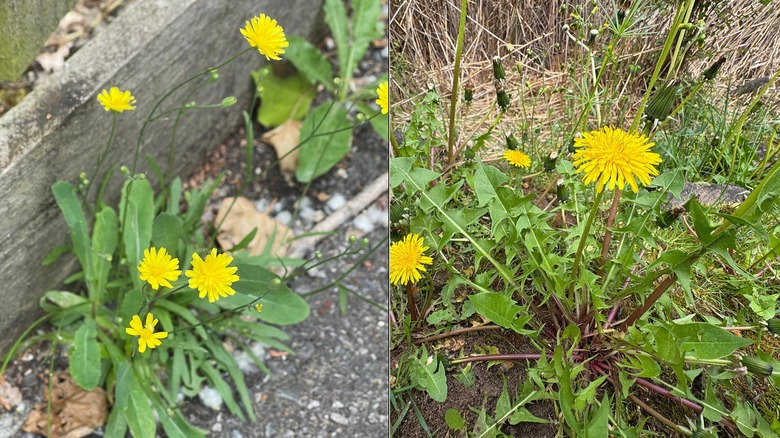The Dandelion Lookalike That Could Be Bad News For Your Garden
As you gaze at your lawn in summer, you might spot a few yellow flowering weeds that you'll think about removing when you have the time. At first glance, these might just look like harmless dandelions that you're probably not concerned about because they attract bees and other pollinators to your yard, and killing the dandelions in your yard can put your lawn at a disadvantage. But, you might want to take a closer look because those bright yellow flowers may actually be a dandelion lookalike that could be bad news for your garden if you don't get rid of them as quickly as you can. This lookalike is known as cat's ear (Hypochaeris radicata) and it's regarded as a noxious weed in many parts of the U.S., as well as other countries around the world.
Like dandelions, this weed can spread through the fluffy seed heads, which are easily dispersed by the wind. In areas with disturbed soil, like your garden, the seeds will readily germinate, and before you know it, the weed will be everywhere. That's why you want to learn how to distinguish cat's ear from dandelions (Taraxacum officinale), so you can act fast to rid your yard of this noxious and invasive weed. While you're taking a closer look, you might be interested to know that there are quite a few dandelion look-alikes that may be lurking in your yard, including yellow hawkweed and bristly hawkbit.
Identification and removal methods of cat's ear
Distinguishing cat's ear from a dandelion is not that difficult if you closely examine the structure of each plant. To begin with, cat's ear has flowering stems that are forked with multiple blooms, while dandelions only flower on a single stem, which emanates from the center of the leafy rosette. The leaves of both plants are also quite different. Cat's ear has broader leaves with lobed edges and hairs that are quite rough. On the other hand, dandelions have smooth, hairless leaves that are narrower and have jagged edges. You'll also find that while dandelions are common in spring, cat's ear tends to be more prevalent over summer.
As is the case with any noxious weed, speedy removal is recommended. Horse owners should be particularly vigilant because the consumption of this plant can cause stringhalt in the animal, which can result in the lameness of the hind legs. Cat's ear can be removed by mechanical pulling, ensuring that you lift out the entire taproot, which is quite long. Using something like a hook knife or hand weeder is an easy way to get rid of and prevent weeds from growing. Simply mowing your lawn, if you have an infestation of cat's ear, will not control the weed or its spread, as the leaves sit close to the ground and the plant will just continue to flower. You can also treat the weed with an approved herbicide by getting in touch with your local county extension office and following the recommendations given.

